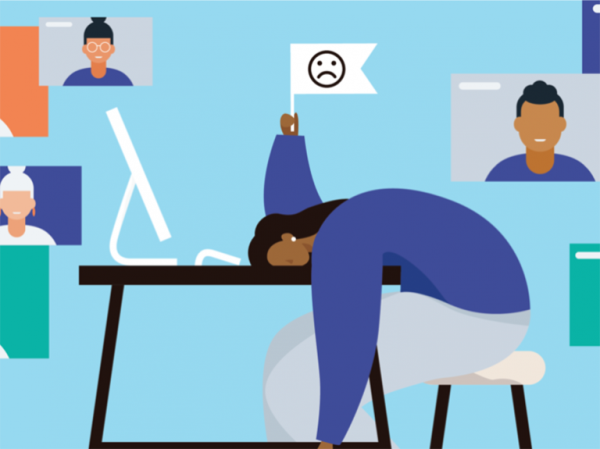
“Zoom fatigue” have become new buzzwords for the weariness, eye strain and stress many feel from too many online meetings. And the data shows these meetings are continually on the rise, with no end in sight, ever since office workers turned to video conferencing as the most popular way to communicate during the pandemic.
Try these five things to help ease fatigue:
- Choose your tech solutions wisely. Individuals or teams should relook at their work options and mix up the digital tools they use, with the understanding that different tools come with distinct benefits and limitations. Videoconferencing is a good option for remote meetings but that doesn’t mean you should use it for most occasions. Video tools allow you to fully pack your calendar but that doesn’t mean you should.
- Reduce your close-up eye contact. Too much intense close-up eye contact can lead to stress, similar to public speaking anxiety. Try to take Zoom out of the full-screen option and reduce the size of the Zoom window relative to the monitor to minimize face size. Use an external keyboard to give you more space between you and the computer screen.
- Hide your self-view. Seeing yourself during video chats constantly in real-time is fatiguing. It is like seeing yourself in a mirror — constantly. Research indicates it can even lead to negative emotions related to your appearance or how you respond to people and circumstances during the meeting. Try using the “hide self-view” button, which you can access by right-clicking on your own photo, once your face is framed properly in the video.
- Move around. In-person and audio phone conversations allow many humans to move around. But with videoconferencing, most cameras require that you stay in the same spot. Growing research now indicates that when people are moving, they’re performing better cognitively. Think about the room you use for videoconferencing, how the camera is positioned, and whether an external keyboard can help create distance or flexibility. Turning the video off periodically during meetings is a good ground rule for teams and individuals.
- Give yourself an “audio only” break. Nonverbal cues and gestures are an easy and comfortable way to communicate, but in video chats we must work harder to send and receive these signals. To agree, you must use an exaggerated nod or put your thumbs up. In addition, gestures can mean different things in a video meeting, causing additional confusion. This may add to our “cognitive load,” like using extra mental calories. During long stretches of meetings, try turning off your camera and also turning your body away from the screen.
Read the rest of the Zoom fatigue article on the Michigan Medicine Headlines website.
